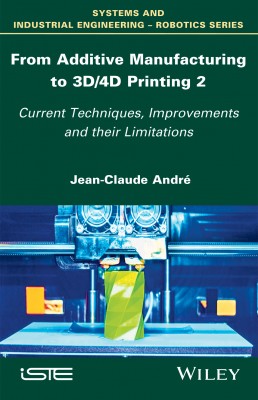
Additive manufacturing, which was first invented in France and then applied in the United States, is now 33 years old and represents a market of around 5 billion euros per year, with annual growth of between 20 and 30%.
Today, additive manufacturing is experiencing a great amount of innovation in its processes, software, engineering and materials used. Its strength as a process has more recently allowed for the exploration of new niches, ranging from applications at nanometer and decameter scales, to others in mechanics and health.
As a result, the limitations of the process have also begun to emerge, which include the quality of the tools, their cost of manufacture, the multi-material aspects, functionalities and surface conditions
Volume 2 of this series presents the current techniques, improvements and limits of additive manufacturing, providing an up-to-date review of this process.
Part 1. Incremental Innovations and Technologies Pushed to their Limits
1. Incremental Developments of Processes, Machines and Materials.
Part 2. Additive Manufacturing Pushed to its Limits
2. Micro-Fluidics (or Microfluidics).
3. 3D Nanomanufacturing, 3D Micro-Electronics and Micro-Robotics.
Part 3. How Should We Go That One Step Further?
4. A Short Reflection on Spheres to Explore Their Conditions for Achieving Success.
5. Questions of Hope and “Unhope”.
Jean-Claude André is a Researcher with the CNRS where he works on light–matter interactions. He is responsible for the first ever patent in stereolithography, granted in 1984, and patented a non-layer 3D printing process in 2016. His research focuses on 4D printing and bio-printing.